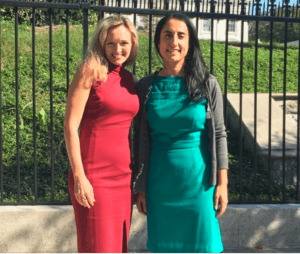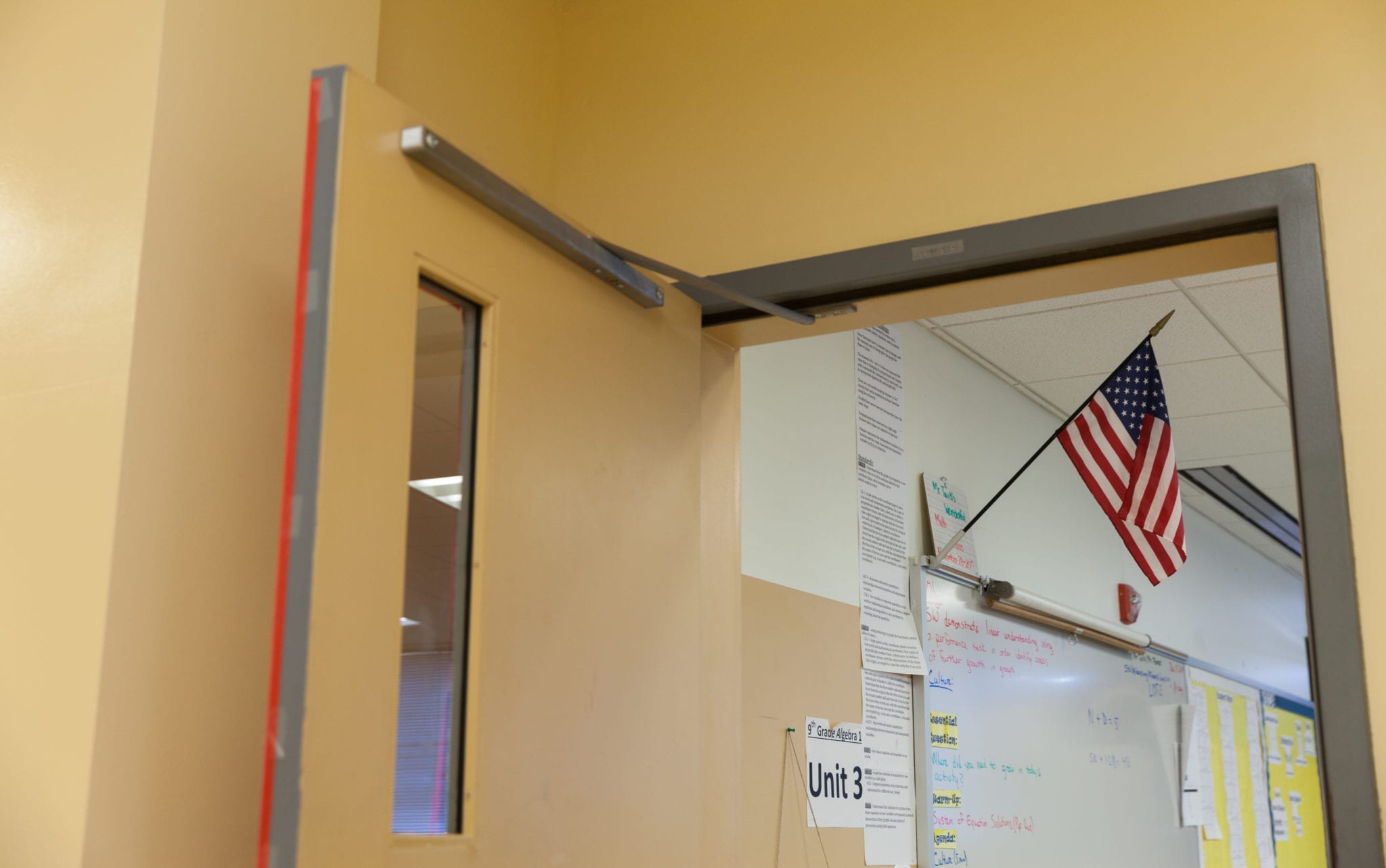Two questions are raised in nearly every discussion I have related to education reform and improvement: “What is your level of evidence?” and “What are you doing to advance equity?” These are the right questions to ask and they were the focus of my remarks yesterday at a White House roundtable discussion on “Evidence in Education.”
I was invited to address how evidence can drive equity and was honored to share the story of the Building Assets, Reducing Risks (BARR) model and learn from other participants, such as the Achievement Network, Success for All, Results for America, and the Gates Foundation.

Nadya Dabby, Assistant Deputy Secretary for Innovation and Improvement, U.S. Department of Education and myself in front of the White House
BARR is based on the belief that relationships matter, and that students do better when they are known and cared about. BARR helps educators connect with their students and address the issues that create barriers to their success. The model recognizes that human connection is perhaps the most important aspect of life. Students thrive in schools where they are supported and encouraged by someone whom they respect and who cares about them. Relationships are core to why educators chose their profession as well. Helping students succeed provides them with renewed energy and motivation on a daily basis. BARR recognizes the dedicated and gifted educators that work in our schools, while also acknowledging the need for training, aligned processes, and structures to support them in ensuring all students thrive.
I believe that all people have unique talents and strengths, and that all students have the right to a quality education. BARR focuses on each individual student and systematizes the process by which multiple adults coordinate to form a network of support. This web of support knows which students are doing well, which are struggling, their barriers and their strengths. The key to success in these support networks is that they are built on authentic, positive and intentional relationships. These relationships occur in all settings- small, large, urban, suburban and rural schools. Student interventions that are informed by real-time data and implemented by adults that have built authentic relationships, lead to success for all students — regardless of their zip code
Evidence is a critical tool to drive equity. Evidence makes practices and outcomes transparent, both at the student level within a school and at the school level across regions. BARR has received two i3 grants, one in 2010 and another in 2013. Funding has allowed the model to be researched using the most rigorous study design and has facilitated its expansion to 44 high schools in nine states. Research from both i3 projects has shown BARR to have a positive impact on 9th grade students’ standardized test scores, credits earned, grade point average, overall failure rate as well as show an increase in key social and emotional outcomes. BARR has also been shown to close the gap in achievement scores between white and non-white students and its research meets WWC evidence standards without reservation.
My experience over the past 18 years has taught me that questions related to evidence and equity are inextricably linked. Evidence advances equity. A first step in addressing the gap is being able to identify exactly where the gaps exist across schools and even more critically, within each school. By coupling the analysis of student data with the implementation of proven strategies, schools can close gaps, while improving outcomes for all students. BARR’s structure for helping schools collect and analyze data becomes the impetus for impacting educational outcomes for low-income students and students of color.
I have also learned that school leaders will quickly embrace and expand improvement efforts that directly address both evidence and equity. Based on the positive results at one of our 2010 i3 study schools, Hemet High School, and BARR’s demonstrated ability to support the district’s equity focus, the superintendent leveraged school funds to expand the BARR model to three additional schools in the district. The work has now expanded to schools across the country.
The BARR logo, “Same teachers. Same students. Better results” captures the belief that evidence and equity must work together to ensure that all students are able to succeed in school, career, and life.
